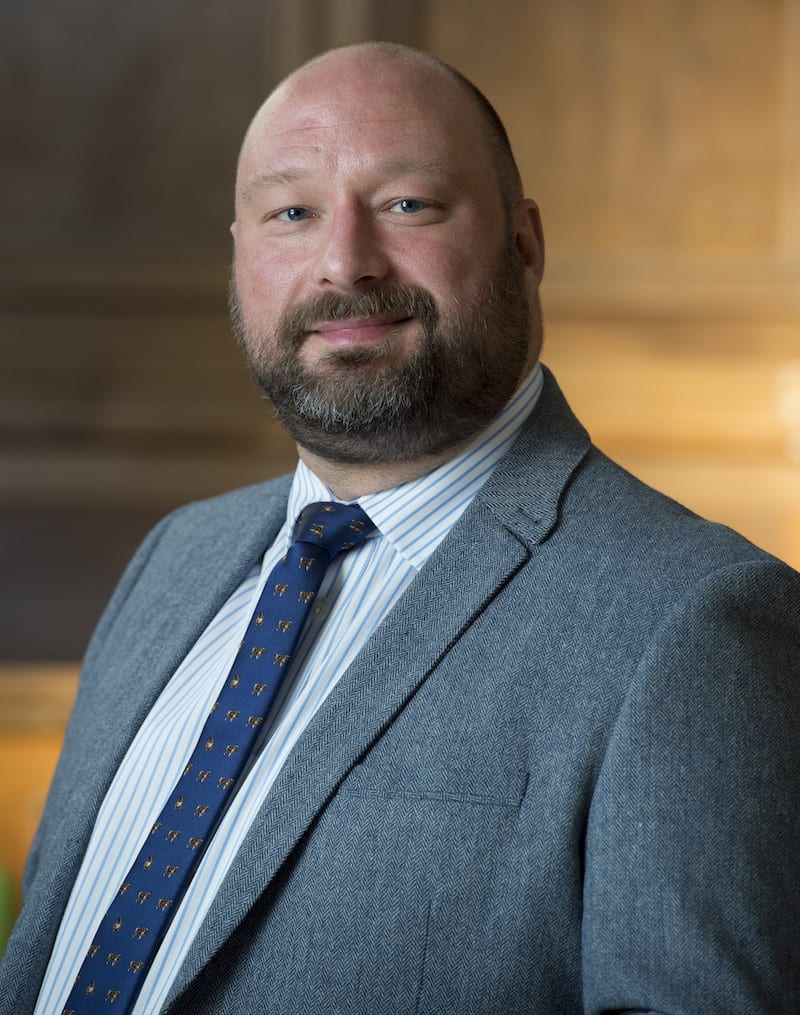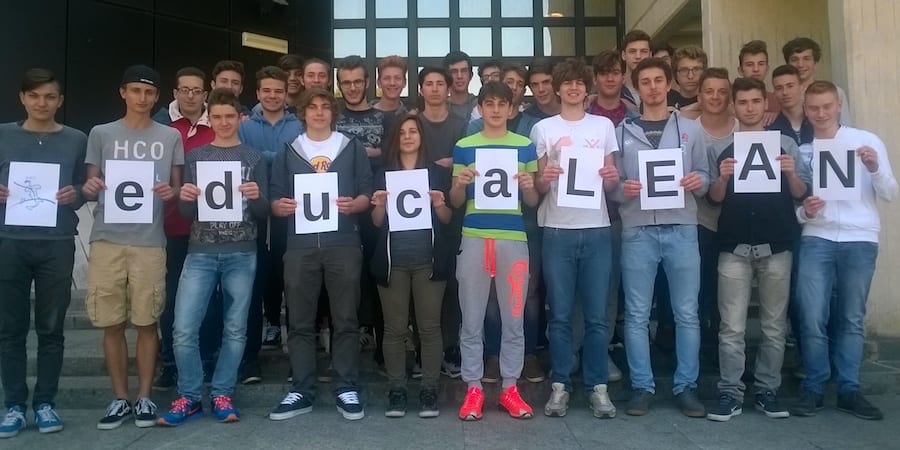
Lean and green in a Scottish university
FEATURE – Why do lean and green go hand in hand? In the experience of this university in Edinburgh, they are both about respecting people and thinking holistically.
Words: Jamie Pearson, Environmental Sustainability Manager, with Steve Yorkstone, Business Improvement Consultant – Edinburgh Napier University, Scotland.
I grew up in the Shetland Isles in the 1980s. Looking back, I can easily see how my experiences there have shaped who I am and what I do now. In those island communities, immediate access to resources couldn’t be taken for granted. Their use or consumption had to be planned, all the way down to things like fresh food in winter. Islanders represent natural communities linked symbiotically to the land, sea and the environment around them. Geography and shared experiences connect and pull these communities together.
Here’s a story that illustrates this. My great aunt had a lawnmower stored in her “old garage”. It was used by the three adjacent households. The rule of thumb was that if you had time to cut more than your own grass, you did. When cut, the grass was then put into thick black bags for my uncle to squeeze the air out of, store and use as feed for the sheep through winter – the same sheep that surrounded our house and that I remember seeing butchered when I was around 12. Every part of the animal was used.
Sharing resources or making the best use of them wasn’t something I ever considered as different or special. It just made sense to me. Now my job is to support environmental sustainability at Edinburgh Napier University, a job my great aunt once told me is ridiculous. She couldn’t fathom that people would have to be convinced to share resource, minimize their consumption, or simply reduce waste. (This isn’t to say that 1980s Shetland was a utopian, environmentally sustainable fantasy – my dad, for example, worked in the oil industry and I remember seeing the gas flare from the terminal glowing at night from our home.)
Not unlike the islands back home, university communities can be resource limited and are deeply connected with the world around us. Our 20,000-strong community is very much aware of this and, as much as there is always a risk people don’t feel as though they can influence resource management on campus, it has been able to make great progress in the realm of sustainability. Between 2006 and 2019, we have reduced our carbon emissions associated with the operation of our campuses by 58%. There are several inspirational academic and research projects led through the six Schools that have a positive impact on environmental sustainability at Edinburgh Napier (like the Transport Research Institute and School of Applied Sciences, to name a couple of them).
As Environmental Sustainability Manager (a job I have had since 2008), I see my role in all this as that of an enabler. I get embarrassed when folks talk about me as the person who achieved the carbon reduction or embedded all of the projects. I’m not. No single individual can be credited with such significant improvements. The achievements of Edinburgh Napier to date are the result of a fantastic array of people working collaboratively towards a common goal.
But how does this relate to lean at Edinburgh Napier? In 2014, I was part of the first cohort of the Continuous Improvement Programme within the University, a series of action learning sets and coaching activities to embed lean in the organization (it was developed by Steve Yorkstone, Andrew McKendric and Laurna Macaulay, colleagues and peers at the university). The group was small, which helped to move on from the day-to-day and pause and think strategically. There was immediate trust within the team: I knew three of the four participants well already. Honesty and openness supported our meaningful and purposeful discussions throughout the program.
We met for an afternoon every month and explored a dynamic program of learning, knowledge exchange and shared experiences, tailored to our skills and background with an absolute focus on ensuring we all benefited from it. As the program developed and we became comfortable with diving into lean principles, we all highlighted areas of working practice we were either less comfortable with or would have benefited from discussing and focusing on within a trusted space. It was incredibly valuable both to be brought out of my comfort zone and to make time and focus to support colleagues to speak through areas they had highlighted.
The impact was immediate: following each session, I challenged myself to consider my day-to-day work and evaluate if I was looking at it from a different perspective (the one discussed in the program). As time progressed and my knowledge of lean principles deepened, my confidence in questioning and reviewing systems and projects related to my work also developed. Having leadership support (which extended to one-to-one meetings interspersed between our monthly sessions) gave our discussions more meaning and made us more aware of boundaries, opportunities and expectations.

One year later, a second cohort started the program. I was proud to be invited to be a mentor for one of the participants, which proved to be another valuable experience that further developed my understanding of Lean Thinking. It helped me to not slip back or shelve lean principles. My brain always needs a bit of balance so it was great to feel as though I could give something back in return for the significant support I had received when I was in the program. It also meant that I learned a lot from the mentee as they progressed through the program and as the lean program overall developed in its purposefully dynamic way. I was a mentor for two more colleagues in subsequent years.
Lean Thinking has enabled me to keep going in a sector that can be incredibly challenging, where personal disappointment or shame for not being able to achieve something can be hard to avoid. One statement that sticks in my head from a visiting academic whom Steve had invited to the university was, “It’s process, not personal.” I try to remember this every time I feel stuck and don’t give my brain enough space to think lean.
Environmental sustainability has had a fascinating boost over the past academic year at Edinburgh Napier, as the problem gained visibility and people became more aware of the incredible impact that our community can have on the environment. Through a new strategy, the university has made strong commitments to further reduce carbon emissions, review legacy carbon, consider the principles of environmental sustainability throughout curriculum and research, and to work collaboratively with tools such as the United Nations Sustainable Development Goals. By embedding these ideas in our culture, our community has been able to make leaps and bounds in a relatively short period of time.
Lean has given me greater confidence in looking at system-wide thinking, broadening the project work I support by viewing how opportunities and impact interconnect. The experience of learning with a trusted peer network as part of the lean workshops has encouraged me to take the time and space I needed to think more deeply and strategically about the right way to improve my work. It’s all too easy for to get bogged down in the sticky nonsense of the day-to-day rather than focusing on the small wins, the bigger picture, and the steps taken towards the achievement of our goals. In a changing world, a systematic approach proves really helpful – with it, issues are resolved more effectively and problems are mostly avoided.
Lean has allowed us to achieve greater outcomes, but also to foster greater resilience. The adaption demonstrated by the university in the past few months, in the face of the Covid-19 pandemic, has been heart-warming. The changes we have had to implement have been quick and effective. As a community, we have proved that we consider and care about how our individual actions impact others – including people we may never know nor meet.
For me, the connection between lean and environmental sustainability isn’t glaringly obvious. Sure, one can look at it from the perspective of managing “waste” – and I can certainly talk about it for days! – but to me this synergy is really about respect for people, about enabling others to lead change, about working across a whole organization. That’s how lean has allowed sustainability to take center stage in our work at the university.
There is a paradox that faces individuals seeking to improve how their work is managed or those looking to sustain our physical biosphere. As individuals it seems like we can’t get much done, however much we try. Principally, the challenges we have within our work or in environmental sustainability arise from the consequence of the behaviors of many. This takes me back to something I learned early in my career, when I was supporting the Eco-Schools program: that the voices of passionate individuals do add up. While it may feel like the small actions each of us can take are pretty fruitless, it is in fact the amalgamation of those small actions that ultimately creates a more sustainable organization – both in terms of financial and environmental performance.
I am reminded of my upbringing up in Shetland. Being part of a sustainable community – be it an island or a lean university – requires a holistic effort. We all have a role to play. Someone has to research the lawnmower, procure it, find a shed for it, ensure there’s fuel for it, clean and maintain it. Someone has to be the enabler, the person working behind the scenes. Someone has to be Great Aunt Janie. That’s why, to me, lean and green go hand in hand. Both call for an effort to connect people within the community, support them and enable them to work together. In other words, an effort to truly lead change.
THE AUTHOR


Read more


INTERVIEW – This moving company in Singapore has taken its first steps down the lean road, reminding us that translating your strategy into small, actionable improvements people can make at the gemba is the way to a transformation.


FEATURE – Lean represents a strategy to understand what needs to be improved, the critical skills that must be developed to solve a specific problem – whether it’s a quality defect or a pandemic.


WEB SERIES – Episode 3 of our docuseries on lean in Brazil takes us to the second largest bank in the country. Learn how Bradesco is striving to improve its processes to provide more value to its customers using Lean Thinking.


FEATURE – Is the traditional teaching model used in our schools obsolete? A high school in Italy has been experimenting with lean thinking and Scrum applied to students’ learning, and the results have been enlightening.

